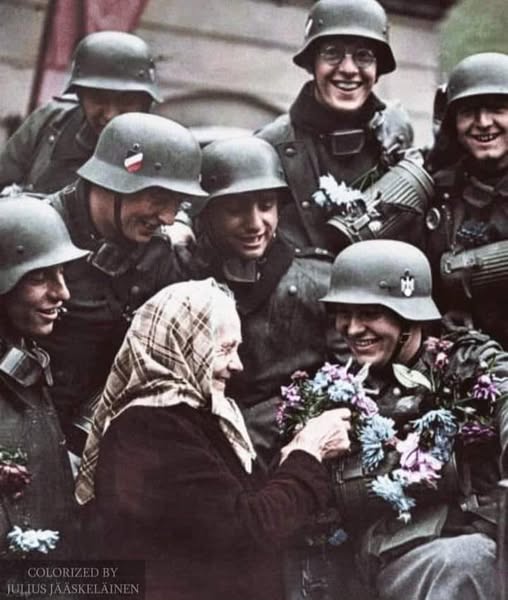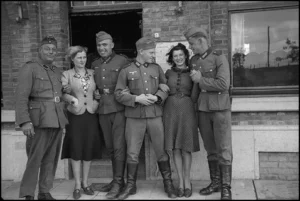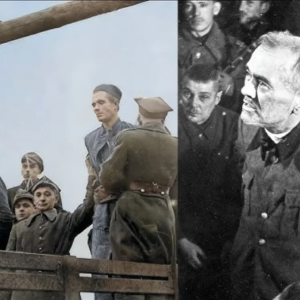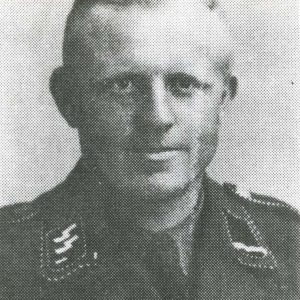
On October 4, 1938, German troops marched into Friedland, a small town in the Sudetenland. This invasion was part of the annexation of the Sudetenland, agreed upon in the Munich Agreement. The agreement allowed Germany to occupy the predominantly German-speaking areas of Czechoslovakia. It was a move that would ultimately lead Europe into World War II.
The Sudetenland Crisis began in the 1930s, when the Nazis under Adolf Hitler began expanding their territorial claims in Europe. The Sudetenland, which had become part of the newly formed Czechoslovakia after World War I, had a large German minority that often felt discriminated against. Hitler exploited these tensions to demand the Sudetenland’s annexation to the German Reich.
Nazi propaganda often depicted images of cheering people greeting German troops with flowers and enthusiasm. A well-known example is the image of an old woman presenting flowers to German soldiers in Friedland on October 4, 1938. These scenes were intended to portray the annexation as a peaceful “liberation” and the soldiers as heroes.
But the reality was far more complex. While many Germans in the Sudetenland actually celebrated the arrival of the Wehrmacht as a liberation, others feared the consequences of Nazi rule. Czechs and other minorities viewed the invasion as a threat and soon suffered repression and discrimination.
Flowers had a symbolic meaning in Nazi propaganda. They were meant to express warmth, peace, and gratitude—a sharp contrast to the brutal reality of war and occupation. The image of the old woman handing out flowers was meant to portray the German soldiers as protectors and liberators, welcomed by the local population.
For many young soldiers, this may have been their first deployment outside Germany’s borders. The flowers and the people’s cheers may have given them the feeling they were defending a just cause—a dangerous illusion carefully cultivated by propaganda. Later, as the war entered its darker phases, many of these soldiers lost their initial conviction and were confronted with the gruesome reality of war.
The consequences of the occupation
After the invasion, the Sudetenland was fully incorporated into the German Reich and declared the Reichsgau Sudetenland. The non-German population was oppressed, expropriated, or expelled. Many Czechs and Jews fled or were deported to concentration camps. The region was completely Germanized, and Czech culture was systematically suppressed.
Today, images like that of the old woman with flowers remind us of the complexity of history. They symbolize how propaganda can distort our perception of reality. These images should remind us to critically examine historical representations and not forget the complex experiences of people during this time.






